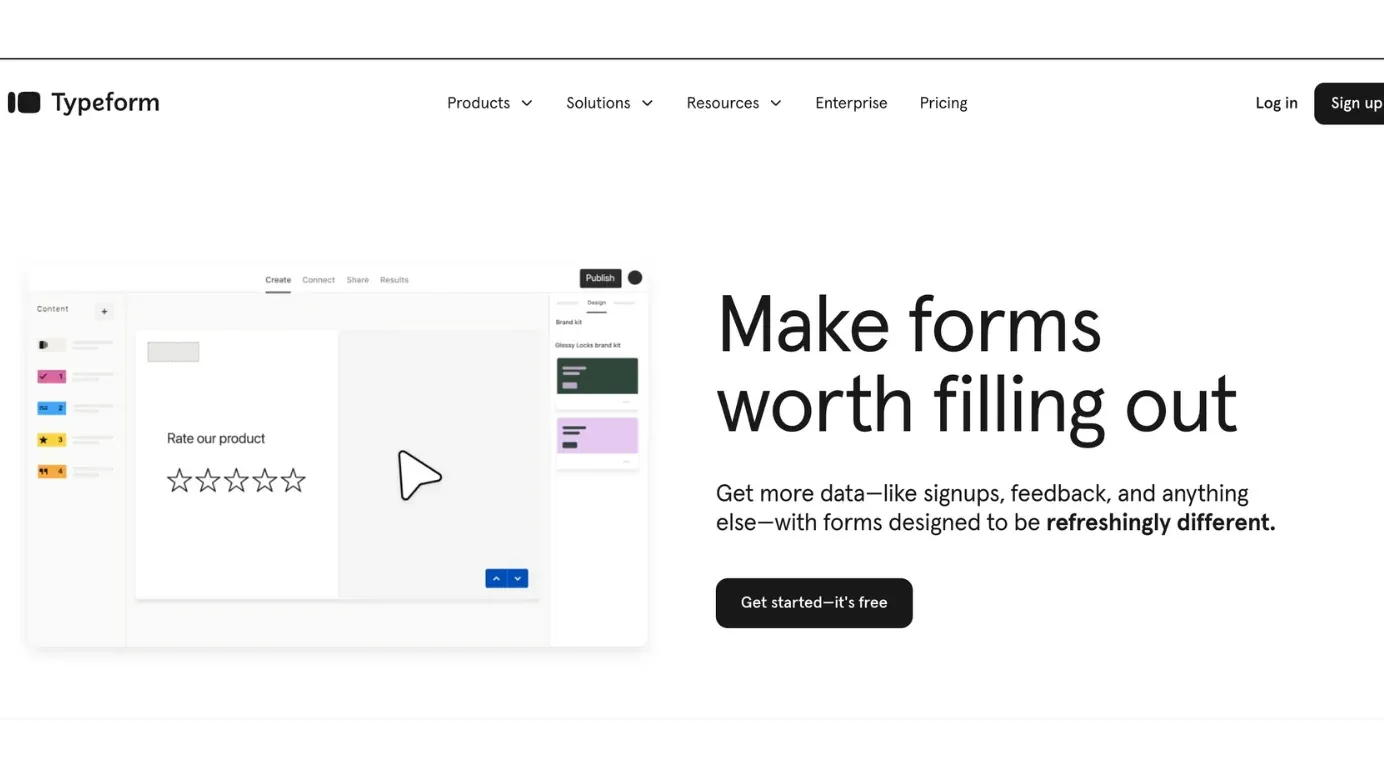Table of Contents
In today’s competitive business environment, recognizing employee performance is more than just a feel-good initiative—it’s a critical driver of motivation, engagement, and overall organizational success.
With the right strategies in place, performance recognition programs can transform the workplace into a thriving environment where employees feel valued and motivated to perform at their best.
Performance recognition programs are pivotal in driving employee motivation, enhancing productivity, and retaining top talent. These programs not only acknowledge employees' efforts but also foster a culture of appreciation and continuous improvement, directly contributing to organizational success.
According to a Gallup study, companies with effective recognition programs see a 31% reduction in voluntary turnover, highlighting the critical role of recognition in employee retention.
What are performance recognition programs?
Performance recognition programs are structured initiatives designed to acknowledge and reward employees for their achievements and contributions. These programs aim to create a culture of recognition by consistently celebrating individual and team successes.
Key elements of successful recognition programs include clear criteria for recognition, timely acknowledgment, personalized rewards, and a balance between individual and group recognition. By incorporating these components, companies can ensure that their recognition efforts are impactful and aligned with organizational goals.
What are the best employee recognition programs?
Employee recognition programs are crucial for fostering motivation, engagement, and satisfaction within the workplace. Leading companies like Amazon, Airbnb, and Zappos have mastered recognition by implementing tailored programs that celebrate employee contributions, enhance performance, and build a positive work culture.
Employee recognition programs are crucial for fostering motivation, engagement, and satisfaction within the workplace. Leading companies like Amazon, Airbnb, and Zappos have mastered recognition by implementing tailored programs that celebrate employee contributions, enhance performance, and build a positive work culture.
Let's have a look at some of the best programs.
1. Amazon: Daily Check-Ins and Real-Time Feedback
Amazon’s approach to performance recognition revolves around frequent feedback and daily check-ins. Employees are encouraged to provide feedback through daily surveys, which allows management to gather real-time insights into employee satisfaction and performance.
This feedback system enables Amazon to address issues quickly, make data-driven decisions, and continuously improve the work environment. By listening to employees regularly, Amazon fosters a culture of transparency and responsiveness, leading to higher engagement and better performance.
Key Takeaways: Amazon’s emphasis on real-time feedback demonstrates how continuous listening can drive ongoing improvements and enhance employee engagement. Integrating daily feedback loops ensures that employees feel heard and valued, directly impacting their performance and job satisfaction.
Relevance: Amazon.com’s employee base grew from 158 to 614, and they have significantly strengthened our management team in the year 2023.
2. Airbnb: Celebrating diversity and innovation

Airbnb’s “Belong Anywhere” recognition program is a cornerstone of its employee engagement strategy. The company celebrates diverse contributions, innovative ideas, and cultural achievements, emphasizing the importance of individuality in the workplace.
Recognition comes in various forms, including awards for creativity, innovation, and teamwork. Airbnb’s approach highlights the power of celebrating employees’ unique contributions, which not only boosts morale but also fosters an inclusive and dynamic work environment.
Key Takeaways: Celebrating diversity and innovation can significantly enhance employee morale and drive creativity. Airbnb’s recognition program shows how valuing diverse perspectives can create a sense of belonging and inspire employees to bring their best ideas forward.
3. Zappos: The power of peer-to-peer recognition
Zappos is renowned for its peer-to-peer recognition program, which empowers employees to acknowledge each other’s contributions. This system allows employees to reward one another with points, public shout-outs, or small gifts, creating a positive and collaborative work culture.
Peer recognition fosters camaraderie and encourages a sense of community, which is vital for maintaining high levels of engagement and satisfaction.
Key Takeaways: Peer-to-peer recognition can amplify the impact of traditional recognition methods by fostering a culture of appreciation among colleagues. Zappos’ approach demonstrates the benefits of empowering employees to recognize each other, enhancing teamwork and motivation.
4. Typeform: Personalized recognition for high performance

Typeform’s performance recognition program stands out due to its focus on personalization. Employees receive recognition tailored to their individual achievements, which enhances the perceived value of the rewards.
Typeform uses a merit-based approach where rewards are customized based on the significance of the accomplishments, ensuring that recognition feels meaningful and impactful.
Key Takeaways: Personalizing recognition to match individual achievements can significantly boost employee motivation. Typeform’s approach underscores the importance of tailoring recognition to ensure it resonates with each employee’s contributions.
5. Salesforce: Gamification and reward systems
Salesforce integrates gamification into its performance recognition program, making recognition fun and engaging. Employees earn points, badges, and other rewards for meeting performance goals, completing tasks, or exhibiting desired behaviors.
This gamified approach not only motivates employees but also encourages healthy competition and continuous improvement.
Key Takeaways: Gamification can make recognition programs more engaging and enjoyable. Salesforce’s strategy highlights how incorporating game elements can boost participation and drive higher performance levels.
6. Google: Data-driven recognition and continuous feedback
Google’s recognition program relies heavily on data-driven insights and continuous feedback. The company conducts regular surveys and analyzes performance data to identify top performers and areas for improvement.
Google’s approach to recognition is deeply embedded in its data culture, ensuring that recognition is both fair and impactful. Managers receive feedback reports to help them better understand their teams and tailor recognition efforts accordingly.
Key Takeaways: Leveraging data to drive recognition decisions ensures that efforts are targeted and effective. Google’s emphasis on feedback and analytics demonstrates how companies can use data to enhance the recognition experience.
Relevance: Google’s use of data-driven recognition is backed by research indicating that companies using analytics for recognition see 12% higher performance levels and a 20% improvement in employee satisfaction as per Harvard Business Review.
7. Cisco: Comprehensive recognition programs and awards
Cisco’s recognition program is built on a structured approach that includes awards, ceremonies, and personalized recognition. The company’s “Connected Recognition” initiative allows employees to recognize their peers, celebrate milestones, and participate in award ceremonies that highlight exceptional achievements.
This comprehensive approach ensures that recognition is an integral part of the company culture, helping to maintain high levels of employee engagement.
Key Takeaways: A structured recognition program with diverse recognition methods can cater to different employee needs and preferences. Cisco’s comprehensive approach shows the value of integrating multiple recognition channels to create a robust and inclusive program.
How to start a performance recognition program
Drawing from these examples, implementing a successful performance recognition program involves several key steps:
- Define your recognition objectives: Identify what behaviors, achievements, or milestones you want to recognize and align these objectives with your company’s values and goals.
- Choose recognition methods that align with company culture: Select recognition methods that resonate with your employees, whether through formal awards, peer-to-peer recognition, or personalized rewards.
- Roll out the program and communicate it effectively: Ensure that employees understand the program’s purpose and how they can participate. Effective communication is crucial for program success.
- Monitor and refine the program based on feedback: Collect feedback from participants and continuously improve the program to keep it relevant and impactful.
Having understood the process of initiating a Performance Recognition Programs let’s have a look at the best practices for these.
Best practices for performance recognition programs
Following are the best practices for performance recognition programs:
1. Ensuring inclusivity and fairness
- Inclusivity focus: A survey by the Pew Research Center found that 56% of workers believe that focusing on diversity, equity, and inclusion (DEI) at work is beneficial. However, opinions vary significantly across demographic lines, with higher support among women (61%), Black (78%), Asian (72%), and Hispanic (65%) workers compared to White workers (47%) .
- Perception of fairness in recognition: According to the Chartered Institute of Personnel and Development (CIPD), inclusivity and fairness in recognition are crucial for a positive work environment. The report highlights that organizations that emphasize fair reward practices see higher employee satisfaction and engagement levels.
2. Balancing individual and team recognition
- Impact of team recognition: A report from CIPD outlines that balancing individual and team recognition can significantly enhance collaborative efforts. Recognizing both individual and group contributions leads to a more inclusive and engaging environment, which in turn fosters a sense of belonging among employees.
- Benefits of mixed recognition: Organizations that effectively balance individual and team recognition strategies often experience higher levels of employee motivation and productivity. The CIPD emphasizes that employees feel more valued when their personal achievements and team efforts are acknowledged appropriately.
3. Utilizing technology to streamline recognition processes
- Technology adoption in recognition programs: According to a CIPD study, integrating technology into recognition processes can enhance efficiency and scalability. Companies using digital platforms for recognition reported more consistent and timely acknowledgments of employee achievements.
- Automated recognition systems: The CIPD also found that technology-based recognition, such as automated reward systems, not only streamlines the process but also ensures that recognition is aligned with real-time performance data. This approach reduces biases and enhances the overall effectiveness of recognition programs.
Conclusion
Performance recognition programs are powerful tools for enhancing employee motivation, engagement, and retention. By adopting best practices and learning from leading companies, organizations can create recognition programs that inspire success and drive peak performance
Empower your team with recognition that matters. Visit Empuls to learn how to create a performance recognition program that elevates employee engagement and drives success.
FAQs
What is a Performance Recognition Program?
A Performance Recognition Program is a structured initiative designed to acknowledge and reward employees for their achievements and contributions. These programs aim to foster a culture of appreciation and continuous improvement by celebrating individual and team successes.
Why are Performance Recognition Programs important?
Performance Recognition Programs are crucial for boosting employee motivation, engagement, and productivity. They help create a positive work environment where employees feel valued, leading to higher retention rates and overall organizational success.
How do Performance Recognition Programs impact employee retention?
Recognition programs significantly impact employee retention by making employees feel appreciated for their efforts. According to a Gallup study, companies with effective recognition programs see a 31% reduction in voluntary turnover, demonstrating the critical role of recognition in keeping top talent.
What are some examples of successful Performance Recognition Programs?
Leading companies like Amazon, Airbnb, Zappos, Typeform, Salesforce, Google, and Cisco have implemented successful recognition programs. These programs include real-time feedback, peer-to-peer recognition, personalized rewards, and gamification, creating engaging and motivating work environments.
What are the key elements of a successful Performance Recognition Program?
Successful recognition programs include clear criteria for recognition, timely acknowledgment, personalized rewards, and a balance between individual and group recognition. These elements ensure that recognition efforts are meaningful, impactful, and aligned with company goals.
How can a company start a Performance recognition program?
To start a performance recognition Program, companies should define their recognition objectives, select methods that align with their culture, effectively communicate the program to employees, and continuously monitor and refine the program based on feedback to ensure its success.


